-
Executive Summary
-
Market Introduction
-
2.1
-
Market Definition
-
Scope of the
- Research
- Assumptions & Limitations
-
Study
-
Objectives
-
Markets Structure
-
Key Takeaways
-
Market Research Methodology
-
3.1
-
Research Process
-
Primary Research
-
Secondary Research
-
3.4
-
Market Size Estimation
-
Forecast Model
-
Market Dynamics of the Global Antifreeze
-
Coolant Market
-
Introduction
-
Drivers
-
4.3
-
Restraints
-
Opportunities
-
Challenges
-
Trends/Technology
-
Market Factor Analysis of the Global Antifreeze
-
Coolant Market
-
Supply Chain Analysis
- Raw Material Suppliers
- Distributors/Retailers/Wholesalers/E-Commerce
- End User
- Bargaining
- Bargaining Power
- Threat of Substitutes
- Intensity of Rivalry
-
5.1.2
-
Manufacturers/Producers
-
5.2
-
Porter’s Five Forces Analysis
-
5.2.1
-
Threat of New Entrants
-
Power of Buyers
-
of Suppliers
-
Pricing
-
Analysis
-
Global Antifreeze Coolant Market, by Type
-
Introduction
-
Green Anti-Freeze
- Market Estimates
- Market Estimates & Forecast, by
-
& Forecast, 2023-2032
-
Region, 2023-2032
-
OAT Anti-Freeze
- Market Estimates & Forecast,
- Market Estimates & Forecast, by Region, 2023-2032
-
HOAT Anti-Freeze
- Market Estimates & Forecast, 2023-2032
-
6.4.2
-
Market Estimates & Forecast, by Region, 2023-2032
-
6.5
-
NOAT Anti-Freeze
-
6.5.1
-
Market Estimates & Forecast, 2023-2032
-
& Forecast, by Region, 2023-2032
-
Market Estimates
-
Global Antifreeze
-
Coolant Market, by Product
-
Introduction
- Market Estimates & Forecast, 2023-2032
- Market Estimates & Forecast, by Region, 2023-2032
- Market Estimates & Forecast, 2023-2032
- Market Estimates & Forecast, by Region, 2023-2032
- Market Estimates & Forecast, 2023-2032
-
7.2
-
Ethylene Glycol
-
7.3
-
Propylene Glycol
-
7.4
-
Glycerin
-
7.4.2
-
Market Estimates & Forecast, by Region, 2023-2032
-
7.5
-
Methanol
-
7.5.2
-
Market Estimates & Forecast, 2023-2032
-
Market Estimates & Forecast, by Region, 2023-2032
-
8.
-
Global Antifreeze Coolant Market, by Application
-
Introduction
-
Automobile
- Market Estimates & Forecast, 2023-2032
-
8.2.2
-
Market Estimates & Forecast, by Region, 2023-2032
-
Aerospace
- Market Estimates
- Market Estimates & Forecast, by
-
& Forecast, 2023-2032
-
Region, 2023-2032
-
Industrial
- Market Estimates & Forecast, 2023-2032
- Market Estimates & Forecast, by Region, 2023-2032
- Market Estimates &
-
8.5
-
Construction
-
8.5.1
-
Market Estimates & Forecast, 2023-2032
-
Forecast, by Region, 2023-2032
-
Electronics
- Market Estimates & Forecast,
- Market Estimates & Forecast, by Region, 2023-2032
-
Others
- Market Estimates
-
8.7.1
-
Market Estimates & Forecast, 2023-2032
-
& Forecast, by Region, 2023-2032
-
Global Antifreeze
-
Coolant Market, by Region
-
Introduction
- Market Estimates & Forecast,
- Market Estimates & Forecast, by Type, 2023-2032
- Market Estimates & Forecast, by Product, 2023-2032
- Market Estimates & Forecast, by Application, 2023-2032
- US
-
9.2
-
North America
-
9.2.5.1
-
Market Estimates & Forecast, 2023-2032
-
Forecast, by Product, 2023-2032
-
9.2.5.4
-
Market Estimates & Forecast, by Application, 2023-2032
-
9.2.6
-
Canada
-
9.2.6.1
-
Market Estimates & Forecast, 2023-2032
-
& Forecast, by Product, 2023-2032
-
Forecast, 2023-2032
-
by Type, 2023-2032
-
by Product, 2023-2032
-
by Application, 2023-2032
-
Forecast, 2023-2032
-
9.3.5.2
-
Market Estimates & Forecast, by Type, 2023-2032
-
Market Estimates
-
Market Estimates & Forecast, by Application, 2023-2032
-
Europe
- Market Estimates &
- Market Estimates & Forecast,
- Market Estimates & Forecast,
- Market Estimates & Forecast,
- Germany
-
Market Estimates & Forecast, by Type, 2023-2032
-
Estimates & Forecast, by Application, 2023-2032
-
9.3.6
-
France
-
Estimates & Forecast, 2023-2032
-
Forecast, by Product, 2023-2032
-
9.3.7
-
Italy
-
9.3.7.1
-
Market Estimates & Forecast, 2023-2032
-
& Forecast, by Product, 2023-2032
-
& Forecast, by Product,2023-2032
-
& Forecast, by Product,2023-2032
-
by Type,2023-2032
-
9.3.10.3
-
Market Estimates & Forecast, by Product,
-
Market
-
Market
-
Market Estimates & Forecast, by Type, 2023-2032
-
Market Estimates &
-
Market Estimates & Forecast, by Application, 2023-2032
-
Market Estimates & Forecast, by Type, 2023-2032
-
Market Estimates
-
Market Estimates & Forecast, by Application, 2023-2032
-
Spain
-
Market Estimates & Forecast, 2023-2032
-
Market Estimates & Forecast, by Type,2023-2032
-
Market Estimates
-
Market Estimates & Forecast, by Application,2023-2032
-
UK
-
Market Estimates & Forecast, 2023-2032
-
Market Estimates & Forecast, by Type,2023-2032
-
Market Estimates
-
Market Estimates & Forecast, by Application,2023-2032
-
Russia
-
Market Estimates & Forecast, 2023-2032
-
Market Estimates & Forecast,
-
Market Estimates & Forecast, by Product,2023-2032
-
Application,2023-2032
-
& Forecast, by Type, 2023-2032
-
& Forecast, by Application, 2023-2032
-
of Europe
-
9.3.12.1
-
Market Estimates & Forecast, 2023-2032
-
& Forecast, by Product, 2023-2032
-
Forecast, 2023-2032
-
by Type, 2023-2032
-
by Product, 2023-2032
-
by Application, 2023-2032
-
Forecast, 2023-2032
-
9.4.5.2
-
Market Estimates & Forecast, by
-
Poland
-
Market Estimates & Forecast, 2023-2032
-
Market Estimates
-
Market Estimates & Forecast, by Product, 2023-2032
-
Market Estimates
-
Rest
-
Market Estimates & Forecast, by Type, 2023-2032
-
Market Estimates
-
Market Estimates & Forecast, by Application, 2023-2032
-
Asia-Pacific
- Market Estimates &
- Market Estimates & Forecast,
- Market Estimates & Forecast,
- Market Estimates & Forecast,
- China
-
Market Estimates & Forecast, by Type, 2023-2032
-
Forecast, by Product, 2023-2032
-
& Forecast, by Type, 2023-2032
-
& Forecast, by Application, 2023-2032
-
& Forecast, 2023-2032
-
& Forecast, by Product, 2023-2032
-
9.4.8.2
-
Market Estimates &
-
Market Estimates & Forecast, by Application, 2023-2032
-
India
-
Market Estimates & Forecast, 2023-2032
-
Market Estimates
-
Market Estimates & Forecast, by Product, 2023-2032
-
Market Estimates
-
Japan
-
Market Estimates
-
Market Estimates & Forecast, by Type, 2023-2032
-
Market Estimates
-
Market Estimates & Forecast, by Application, 2023-2032
-
Australia & New Zealand
-
Market Estimates & Forecast,
-
Market Estimates & Forecast, by Type, 2023-2032
-
9.4.8.4
-
Market Estimates & Forecast, by Product,
-
Market Estimates & Forecast, by Application, 2023-2032
-
9.4.9
-
Rest of Asia-Pacific
-
by Type, 2023-2032
-
9.4.9.3
-
Market Estimates & Forecast, 2023-2032
-
Market Estimates & Forecast,
-
Market Estimates & Forecast, by Product, 2023-2032
-
by Application, 2023-2032
-
9.5
-
Middle East & Africa
-
Forecast, 2023-2032
-
by Type, 2023-2032
-
by Product, 2023-2032
-
by Application, 2023-2032
-
& Forecast, by Type, 2023-2032
-
by Application, 2023-2032
-
Estimates & Forecast, by Type, 2023-2032
-
& Forecast, by Application, 2023-2032
-
Africa
-
9.5.7.1
-
Market Estimates & Forecast, 2023-2032
-
& Forecast, by Product, 2023-2032
-
by Type, 2023-2032
-
9.5.8.3
-
Market Estimates & Forecast,
-
Market Estimates &
-
Market Estimates & Forecast,
-
Market Estimates & Forecast,
-
Market Estimates & Forecast,
-
GCC
-
Market Estimates & Forecast, 2023-2032
-
Market Estimates
-
Market Estimates & Forecast, by Product, 2023-2032
-
Market Estimates & Forecast,
-
Israel
-
Market Estimates & Forecast,
-
Market
-
Market Estimates & Forecast, by Product, 2023-2032
-
Market Estimates
-
North
-
Market Estimates & Forecast, by Type, 2023-2032
-
Market Estimates
-
Market Estimates & Forecast, by Application, 2023-2032
-
South Africa
-
Market Estimates & Forecast, 2023-2032
-
Market Estimates & Forecast,
-
Market Estimates & Forecast, by Product, 2023-2032
-
by Application, 2023-2032
-
Africa
-
9.5.9.1
-
Market Estimates & Forecast, 2023-2032
-
& Forecast, by Product, 2023-2032
-
Forecast, 2023-2032
-
by Type, 2023-2032
-
by Product, 2023-2032
-
by Application, 2023-2032
-
Forecast, 2023-2032
-
9.6.5.2
-
Market Estimates & Forecast,
-
Rest of Middle East &
-
Market Estimates & Forecast, by Type, 2023-2032
-
Market Estimates
-
Market Estimates & Forecast, by Application, 2023-2032
-
Latin America
- Market Estimates &
- Market Estimates & Forecast,
- Market Estimates & Forecast,
- Market Estimates & Forecast,
- Brazil
-
Market Estimates & Forecast, by Type, 2023-2032
-
Estimates & Forecast, by Application, 2023-2032
-
9.6.6
-
Argentina
-
9.6.6.1
-
Market Estimates & Forecast, 2023-2032
-
& Forecast, by Product, 2023-2032
-
by Type, 2023-2032
-
9.6.7.3
-
Market Estimates & Forecast, by Product,
-
Market
-
Market Estimates & Forecast, by Type, 2023-2032
-
Market Estimates
-
Market Estimates & Forecast, by Application, 2023-2032
-
Mexico
-
Market Estimates & Forecast, 2023-2032
-
Market Estimates & Forecast,
-
Market Estimates & Forecast, by Product, 2023-2032
-
by Application, 2023-2032
-
& Forecast, 2023-2032
-
by Product, 2023-2032
-
9.6.8.4
-
Market Estimates & Forecast,
-
Rest of Latin America
-
Market Estimates
-
Market Estimates & Forecast, by Type, 2023-2032
-
Market Estimates & Forecast,
-
Market Estimates & Forecast, by Application, 2023-2032
-
10.
-
Company Landscape
-
Introduction
-
Market Strategies
-
10.3
-
Key Development Analysis (Expansion/Merger & Acquisitions/Joint Venture/New
-
Product Development/Agreement/Investment)
-
Company
-
Profiles
-
BP p.l.c.
- Company Overview
- Financial Updates
- Key Developments
- SWOT Analysis
-
11.1.3
-
Product/Business Segment Overview
-
11.1.4
-
Key Strategies
-
Royal
- Company Overview
- Key
- Key Developments
-
Dutch Shell plc
-
11.2.2
-
Financial Updates
-
11.2.3
-
Product/Business Segment Overview
-
Strategies
-
11.2.6
-
SWOT Analysis
-
Exxon Mobil Corporation
- Financial Updates
- Product/Business Segment Overview
- Key Strategies
- SWOT Analysis
-
11.3.1
-
Company Overview
-
11.3.5
-
Key Developments
-
Chevron Corporation
- Company Overview
- Key
- Key Developments
-
11.4.2
-
Financial Updates
-
11.4.3
-
Product/Business Segment Overview
-
Strategies
-
11.4.6
-
SWOT Analysis
-
Total
- Company Overview
- Financial Updates
- Key Developments
- SWOT Analysis
-
11.5.3
-
Product/Business Segment Overview
-
11.5.4
-
Key Strategies
-
BASF
- Company Overview
- Key
- Key Developments
-
SE
-
11.6.2
-
Financial Updates
-
11.6.3
-
Product/Business Segment Overview
-
Strategies
-
11.6.6
-
SWOT Analysis
-
OLD WORLD INDUSTRIES, LLC
- Company Overview
- Product/Business
- Key Strategies
- Key Developments
-
11.7.2
-
Financial Updates
-
Segment Overview
-
11.7.6
-
SWOT Analysis
-
Prestone Products Corporation
- Company Overview
- Product/Business
- Key Strategies
- Key Developments
-
11.8.2
-
Financial Updates
-
Segment Overview
-
11.8.6
-
SWOT Analysis
-
AMSOIL INC.
- Financial Updates
- Product/Business Segment Overview
- Key Strategies
- SWOT Analysis
-
11.9.1
-
Company Overview
-
11.9.5
-
Key Developments
-
KOST USA, Inc.
- Company Overview
- Key
- Key Developments
-
11.10.2
-
Financial Updates
-
11.10.3
-
Product/Business Segment Overview
-
Strategies
-
11.10.6
-
SWOT Analysis
-
Motul
- Company Overview
- Financial Updates
- Key Developments
- SWOT Analysis
-
11.11.3
-
Product/Business Segment Overview
-
11.11.4
-
Key Strategies
-
Cummins
- Financial
- Product/Business Segment
- Key Strategies
- SWOT Analysis
-
Filtration
-
11.12.1
-
Company Overview
-
Updates
-
Overview
-
11.12.5
-
Key Developments
-
Lukoil
- Company Overview
- Key
- Key Developments
-
11.13.2
-
Financial Updates
-
11.13.3
-
Product/Business Segment Overview
-
Strategies
-
11.13.6
-
SWOT Analysis
-
Petroliam Nasional Berhad
- Financial
- Product/Business Segment
- Key Strategies
- SWOT Analysis
-
(PETRONAS)
-
11.14.1
-
Company Overview
-
Updates
-
Overview
-
11.14.5
-
Key Developments
-
Conclusion
-
LIST OF TABLES
-
Global Antifreeze Coolant Market, by Region, 2023-2032
-
North America: Antifreeze Coolant Market, by Country,
-
Europe: Antifreeze Coolant Market, by Country,
-
Asia-Pacific: Antifreeze Coolant Market,
-
by Country, 2023-2032
-
Middle East & Africa: Antifreeze
-
Coolant Market, by Country, 2023-2032
-
Latin America:
-
Antifreeze Coolant Market, by Country, 2023-2032
-
Global
-
Antifreeze Coolant Market Type Market, by Regions, 2023-2032
-
Table 8
-
North America: Antifreeze Coolant Market Type Market, by Country, 2023-2032
-
Europe: Antifreeze Coolant Market Type Market, by Country,
-
Table10 Asia-Pacific: Antifreeze Coolant Market
-
Type Market, by Country, 2023-2032
-
Table11 Middle East &
-
Africa: Antifreeze Coolant Market Type Market, by Country, 2023-2032
-
Table12
-
Latin America: Antifreeze Coolant Market Type Market, by Country, 2023-2032
-
Table13 Global Antifreeze Coolant Market Product Market, by
-
Regions, 2023-2032
-
Table14 North America: Antifreeze Coolant
-
Market Product Market, by Country, 2023-2032
-
Table15 Europe:
-
Antifreeze Coolant Market Product Market, by Country, 2023-2032
-
Table16
-
Asia-Pacific: Antifreeze Coolant Market Product Market, by Country, 2023-2032
-
Table17 Middle East & Africa: Antifreeze Coolant Market
-
Product Market, by Country, 2023-2032
-
Table18 Latin America:
-
Antifreeze Coolant Market Product Market, by Country, 2023-2032
-
Table19
-
Global Antifreeze Coolant Market Application Market, by Regions, 2023-2032
-
Table20 North America: Antifreeze Coolant Market Application
-
Market, by Country, 2023-2032
-
Table21 Europe: Antifreeze
-
Coolant Market Application Market, by Country, 2023-2032
-
Table22
-
Asia-Pacific: Antifreeze Coolant Market Application Market, by Country, 2023-2032
-
Table23 Middle East & Africa: Antifreeze Coolant Market
-
Application Market, by Country, 2023-2032
-
Table24 Latin America:
-
Antifreeze Coolant Market Application Market, by Country, 2023-2032
-
Table25
-
Global Type Market, by Region, 2023-2032
-
Table26 Global
-
Product Market, by Region, 2023-2032
-
Table27 Global Application
-
Market, by Region, 2023-2032
-
Table28 North America: Antifreeze
-
Coolant Market, by Country, 2023-2032
-
Table29 North America:
-
Antifreeze Coolant Market, by Type, 2023-2032
-
Table30 North
-
America: Antifreeze Coolant Market, by Product, 2023-2032
-
Table31
-
North America: Antifreeze Coolant Market, by Application, 2023-2032
-
Table32
-
Europe: Antifreeze Coolant Market, by Country, 2023-2032
-
Table33
-
Europe: Antifreeze Coolant Market, by Type, 2023-2032
-
Table34
-
Europe: Antifreeze Coolant Market, by Product, 2023-2032
-
Table35
-
Europe: Antifreeze Coolant Market, by Application, 2023-2032
-
Table36
-
Asia-Pacific: Antifreeze Coolant Market, by Country, 2023-2032
-
Table37
-
Asia-Pacific: Antifreeze Coolant Market, by Type, 2023-2032
-
Table38
-
Asia-Pacific: Antifreeze Coolant Market, by Product, 2023-2032
-
Table39
-
Asia-Pacific: Antifreeze Coolant Market, by Application, 2023-2032
-
Table40
-
Middle East & Africa: Antifreeze Coolant Market, by Country, 2023-2032
-
Table41 Middle East & Africa: Antifreeze Coolant Market,
-
by Type, 2023-2032
-
Table42 Middle East & Africa: Antifreeze
-
Coolant Market, by Product, 2023-2032
-
Table43 Middle East
-
& Africa: Antifreeze Coolant Market, by Application, 2023-2032
-
Table44
-
Latin America: Antifreeze Coolant Market, by Country, 2023-2032
-
Table45 Latin America: Antifreeze Coolant Market, by Type, 2023-2032
-
Table46 Latin America: Antifreeze Coolant Market,
-
by Product, 2023-2032
-
Table47 Latin America: Antifreeze
-
Coolant Market, by Application, 2023-2032
-
LIST OF FIGURES
-
FIGURE
-
Global Antifreeze Coolant Market Segmentation
-
FIGURE 2
-
Forecast Research Methodology
-
Five Forces Analysis
-
of the Global Antifreeze Coolant Market
-
Value Chain
-
of the Global Antifreeze Coolant Market
-
Global Antifreeze
-
Coolant Market, 2023-2032, by Country, 2020
-
Share of
-
the Global Antifreeze Coolant Market, by Country, 2023-2032
-
FIGURE 7
-
Global Antifreeze Coolant Market Size, by Type, 2020
-
FIGURE 8
-
Share of the Global Antifreeze Coolant Market, by Type, 2023-2032
-
FIGURE
-
Global Antifreeze Coolant Market Size, by Product, 2020
-
FIGURE10
-
Share of the Global Antifreeze Coolant Market, by Product, 2023-2032
-
FIGURE11 Global Antifreeze Coolant Market Size, by Application, 2020
-
FIGURE12 Share of the Global Antifreeze Coolant Market, by Application,


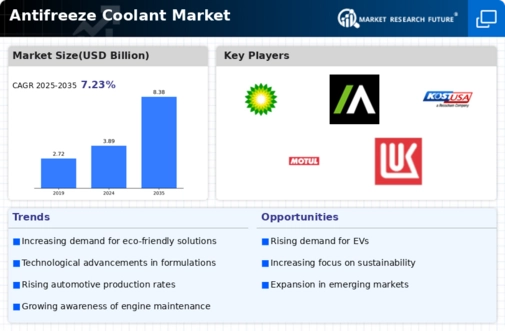
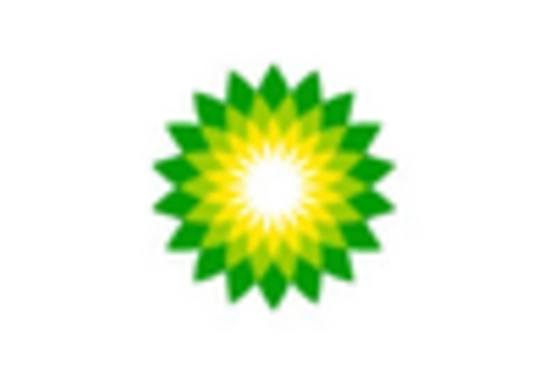
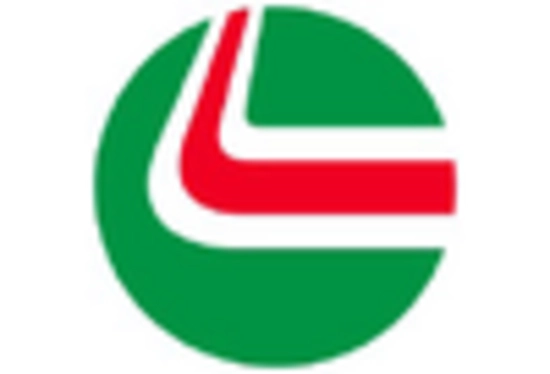
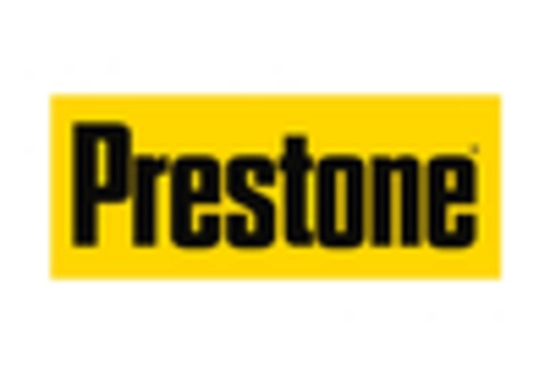
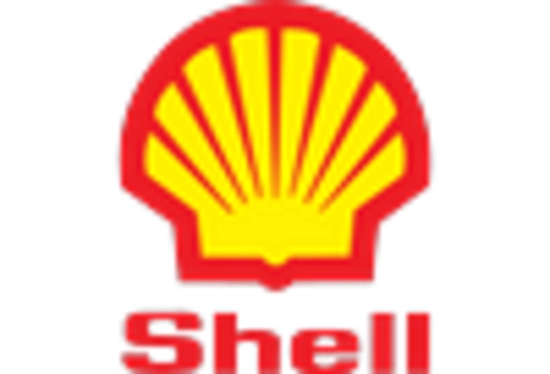
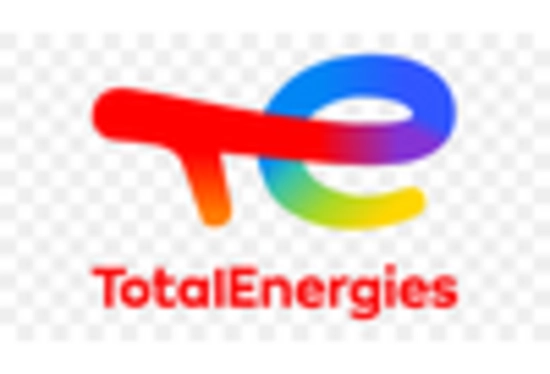
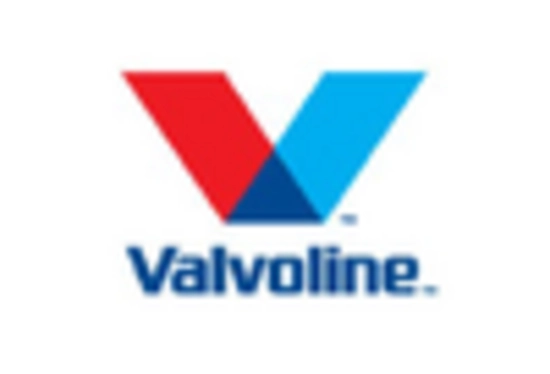

Leave a Comment